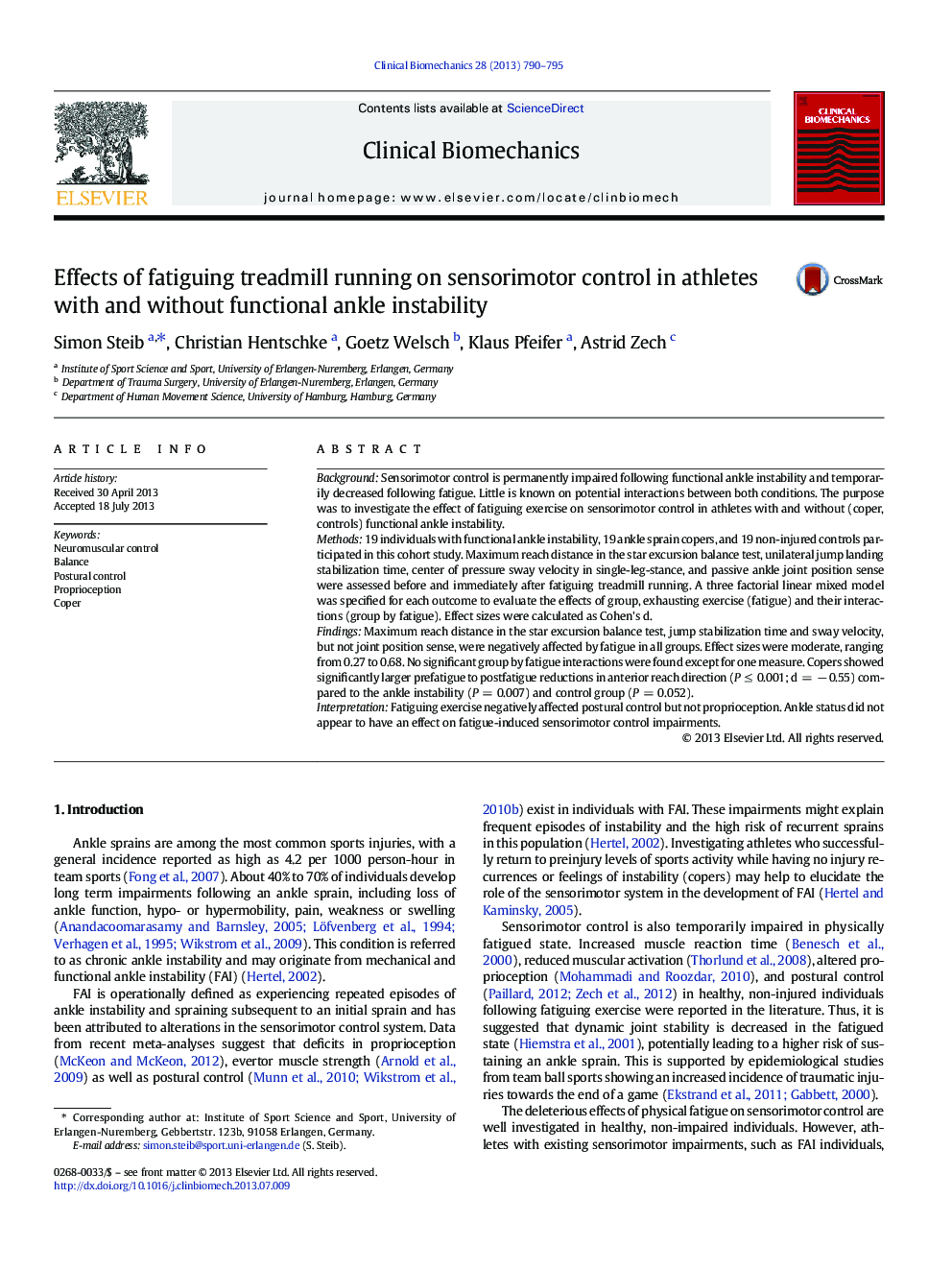| Article ID | Journal | Published Year | Pages | File Type |
|---|---|---|---|---|
| 4050454 | Clinical Biomechanics | 2013 | 6 Pages |
BackgroundSensorimotor control is permanently impaired following functional ankle instability and temporarily decreased following fatigue. Little is known on potential interactions between both conditions. The purpose was to investigate the effect of fatiguing exercise on sensorimotor control in athletes with and without (coper, controls) functional ankle instability.Methods19 individuals with functional ankle instability, 19 ankle sprain copers, and 19 non-injured controls participated in this cohort study. Maximum reach distance in the star excursion balance test, unilateral jump landing stabilization time, center of pressure sway velocity in single-leg-stance, and passive ankle joint position sense were assessed before and immediately after fatiguing treadmill running. A three factorial linear mixed model was specified for each outcome to evaluate the effects of group, exhausting exercise (fatigue) and their interactions (group by fatigue). Effect sizes were calculated as Cohen's d.FindingsMaximum reach distance in the star excursion balance test, jump stabilization time and sway velocity, but not joint position sense, were negatively affected by fatigue in all groups. Effect sizes were moderate, ranging from 0.27 to 0.68. No significant group by fatigue interactions were found except for one measure. Copers showed significantly larger prefatigue to postfatigue reductions in anterior reach direction (P ≤ 0.001; d = − 0.55) compared to the ankle instability (P = 0.007) and control group (P = 0.052).InterpretationFatiguing exercise negatively affected postural control but not proprioception. Ankle status did not appear to have an effect on fatigue-induced sensorimotor control impairments.
